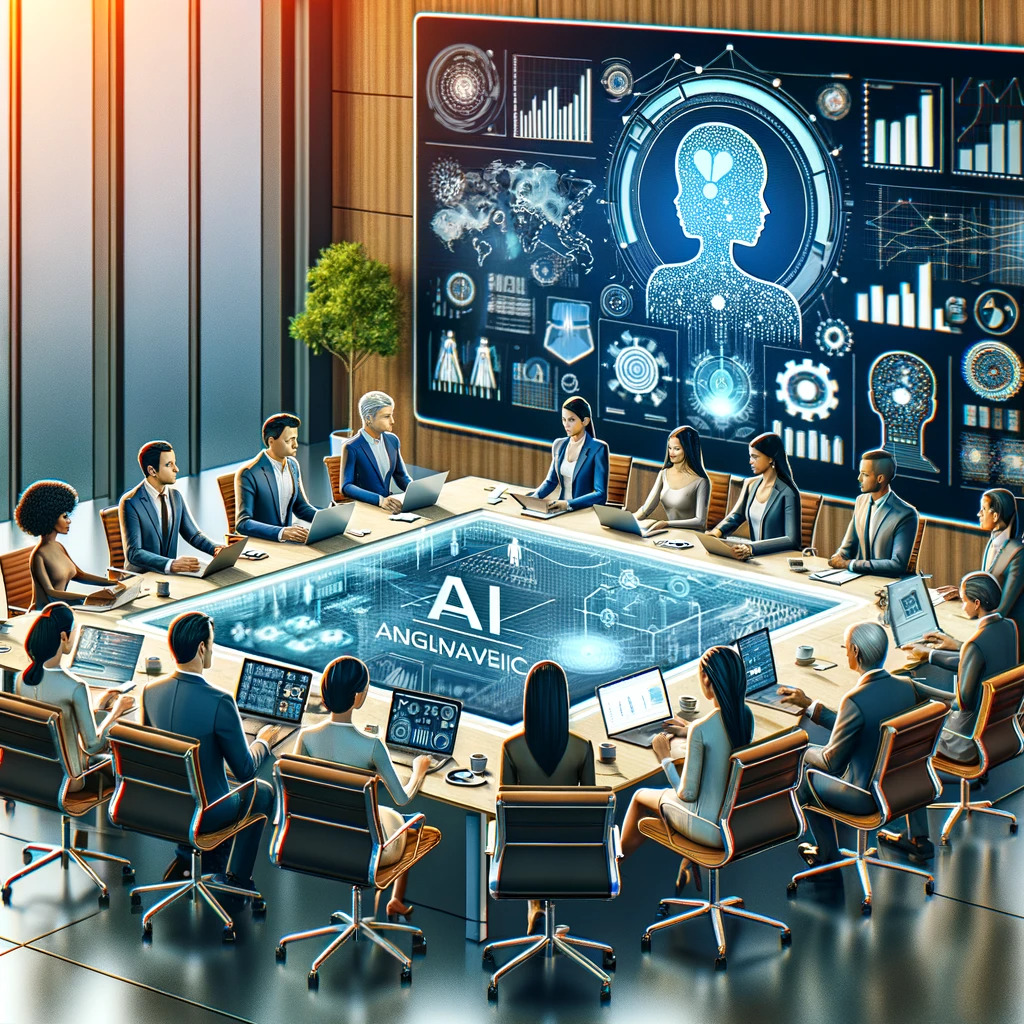One of the key questions, and pushbacks, I get when engaging in the discovery sessions for HR processes transformation is “What are the key regulations in the European Union governing the transformation of HR processes with AI and Automation?”. This blog intends to summarize the EU regulations in this space.
The EU has introduced key regulations to ensure AI in Human Resources (HR) is used responsibly, focusing on protecting rights and promoting fairness. The main regulation is the EU AI Act, which categorizes AI systems by risk and sets strict rules for high-risk uses in HR, such as hiring and performance reviews. This ensures AI supports, rather than replaces, human judgment in sensitive areas.
The EU AI Act, enacted in 2024, establishes a stringent framework for deploying AI in HR, designating applications like recruitment and performance management as high-risk.
To ensure compliance by key milestones
- AI literacy by February 2, 2025, and
- full high-risk obligations by August 2, 2026
The EU HR organization must prioritize transparency, human oversight, and unbiased data while maintaining robust monitoring.
Opportunities exist to leverage AI for initial candidate screening or conversational interfaces, provided final decisions remain human-driven. Practices such as autonomous hiring or workplace emotion recognition are prohibited.

Key Points
- The EU AI Act, effective from 2024, is the main regulation for AI in HR, focusing on high-risk systems like recruitment and performance evaluation.
- Research suggests employers must ensure transparency, human oversight, and unbiased data for AI in HR to comply with the law.
- It seems likely that AI can screen candidates initially with human oversight, but final decisions without human input are likely not allowed.
- The evidence leans toward prohibiting emotion recognition in workplaces, effective from February 2, 2025.
Key Requirements
Employers using AI in HR must follow rules like informing employees about AI use, ensuring human oversight, and using unbiased data. They also need to monitor AI systems for risks and conduct data protection assessments if personal data is involved. These steps help prevent discrimination and ensure fairness.
What You Can and Can’t Do
- Possible: Use AI to initially screen resumes or chat with candidates, as long as you’re transparent and a human makes the final call.
- Not Possible: Let AI make final hiring or firing decisions without human input, or use AI to analyze emotions at work, which is banned from February 2025.
For more details, check the official EU AI Act at this page.
Detailed Analysis on EU Regulations for AI in HR Processes
This section provides a comprehensive overview of the regulations governing the implementation of AI in Human Resource (HR) processes within the European Union (EU), as of April 13, 2025. It includes detailed obligations, examples of permissible and prohibited practices, and the broader context of compliance, drawing from authoritative sources and recent developments.
Background and Regulatory Framework
The EU has positioned itself as a leader in AI regulation with the adoption of the EU Artificial Intelligence Act (AI Act) in 2024, which became law and is set for full implementation by August 2, 2026. This regulation is the first comprehensive legal framework for AI globally, aiming to foster trustworthy AI while ensuring safety, fundamental rights, and human-centric development. For HR, the AI Act is particularly relevant due to its focus on high-risk AI systems, which include applications in recruitment, employee evaluation, and performance monitoring.
In addition to the AI Act, the General Data Protection Regulation (GDPR), effective since 2018, remains critical, as it governs the processing of personal data, which is often integral to AI systems in HR. Together, these regulations create a robust framework to balance innovation with ethical considerations.
Key Obligations Under the EU AI Act for HR
The AI Act adopts a risk-based approach, categorizing AI systems into four levels: unacceptable risk, high-risk, limited risk, and minimal/no risk. For HR, high-risk AI systems are the focus, as they impact individuals’ rights and livelihoods significantly. A really good article for further reading is Hunton Andrews Kurth EU AI Act impact on HR activities. The following table outlines the key obligations for employers deploying high-risk AI systems in HR, effective from August 2, 2026, unless otherwise noted:
| Obligation | Details | Effective Date |
| Transparency | Inform candidates/employees about high-risk AI use, explain functionality, and provide decision explanations. | August 2, 2026 |
| Data Management | Ensure AI training data is relevant, representative, accurate, and unbiased to prevent discrimination, if controlling input data. | August 2, 2026 |
| Monitoring | Continuously monitor high-risk AI systems per provider instructions, identify risks. | August 2, 2026 |
| Human Oversight | Ensure appropriate human oversight for fairness and accuracy in recruitment/employment activities. | August 2, 2026 |
| Data Protection Impact Assessment (DPIA) | Conduct DPIA under GDPR Article 35, evaluate impact on rights/freedoms, propose mitigations, use provider information. | August 2, 2026 |
| AI Literacy | Ensure staff have sufficient AI literacy, implement training programs, tailored to technical knowledge/experience. | February 2, 2025 |
| Workers’ Representatives | Inform workers’ representatives and affected workers before deploying high-risk AI systems. | August 2, 2026 |
These obligations ensure that AI systems in HR are transparent, accountable, and fair, aligning with the EU’s commitment to human-centric AI. Notably, the AI literacy requirement, effective from February 2, 2025, underscores the need for staff training to manage AI systems effectively, reflecting the urgency of preparing for compliance.
Prohibited Practices and Specific Restrictions
The AI Act also bans certain AI practices outright, which are relevant to HR contexts. For instance, emotion recognition systems in workplaces are prohibited, effective February 2, 2025. This ban addresses concerns about privacy invasion and potential discrimination, as such systems could analyze employees’ emotions in ways that infringe on their rights. Other prohibited practices include AI for social scoring, manipulative behavior, and certain biometric identification systems, though these are less directly tied to HR but still inform the broader regulatory landscape.
High-Risk AI Use Cases in HR
The AI Act specifically identifies high-risk AI use cases in HR, which include:
- Recruitment or selection of individuals, such as placing targeted job advertisements, analyzing and filtering job applications, and evaluating candidates.
- Decisions affecting work-related relationships, such as promotion or termination, allocating tasks based on individual behavior or personal traits, and monitoring and evaluating performance and behavior.
These use cases are not banned but must comply with the Act’s requirements, ensuring transparency, human oversight, and data quality to prevent discriminatory outcomes.
Read Jobylon EU AI Act for HR teams for more details on these high-risk cases.

Concrete Examples of Permissible and Prohibited Practices
To illustrate what is possible and what is not under these regulations, consider the following examples:
- Permissible Practices (What is Possible):
- AI for Initial Candidate Screening: Employers can use AI to filter resumes or assess candidates based on predefined criteria, as long as there is transparency about the AI’s use and human oversight in the final decision-making process. For instance, an AI system can rank candidates by matching skills to job requirements, but a human must review and approve the final shortlist.
- AI Chatbots for Candidate Interaction: AI-powered chatbots can be used for initial candidate interactions, such as answering FAQs or scheduling interviews, provided candidates are informed they are interacting with an AI and human resources personnel review the interactions to ensure accuracy and fairness.
- AI for Performance Monitoring: AI can be used to monitor employee performance or allocate tasks, but the data must be representative and unbiased, and human oversight must be in place to interpret the results and ensure fairness. For example, an AI system can analyze productivity metrics, but a manager must review the outputs to avoid misinterpretations.
- Prohibited Practices (What is Not Possible):
- AI for Final Hiring Decisions: AI systems cannot make final hiring, promotion, or termination decisions without human intervention, especially if classified as high-risk. For example, an AI system cannot autonomously decide to reject a candidate based solely on its analysis, as this would lack the necessary human oversight and risk bias.
- Biased or Discriminatory AI Systems: AI systems that are known to be biased or trained on non-representative data cannot be used, as they risk violating the AI Act’s requirements for fairness and non-discrimination. For instance, an AI trained on historical hiring data that reflects past biases (e.g., gender or racial disparities) cannot be deployed without significant mitigation.
- Emotion Recognition in Workplaces: AI systems that analyze emotions (e.g., for employee engagement or stress detection) are prohibited in workplaces, effective from February 2, 2025. This means employers cannot use AI to monitor employees’ emotional states during work, as it infringes on privacy and could lead to discriminatory practices.
These examples highlight the balance between leveraging AI for efficiency and ensuring compliance with ethical and legal standards, reflecting the EU’s risk-based approach.
Compliance Timeline and Global Impact
The implementation timeline is critical for HR departments to prepare:
- February 2, 2025: AI literacy obligations and prohibitions, such as emotion recognition in workplaces, take effect.
- August 2, 2025: Governance rules and obligations for general-purpose AI apply.
- August 2, 2026: Full applicability for high-risk AI systems, including those in HR.
- August 2, 2027: Extended transition for high-risk AI in regulated products.
The AI Act’s extraterritorial reach means it applies to any AI system used within the EU, even if developed or deployed by non-EU companies. This global impact requires multinational organizations, including those based in the UK, to ensure compliance across their operations, particularly for HR tools used in EU markets.
Broader Context and Challenges
The EU AI Act aims to balance innovation with safety, but there is ongoing debate about whether its strict regulations might stifle innovation, especially compared to less restrictive approaches in countries like the UK, Australia, and Japan. However, it provides legal certainty for AI solution providers and employers, fostering a framework for trustworthy AI. For HR, the challenge lies in auditing existing AI tools for compliance, ensuring data quality, and training staff, all while navigating the complexities of GDPR and other local laws.
Supporting Resources
For further details, refer to the official EU AI Act at this page, which outlines the regulatory framework, and the impact analysis for HR at this resource, which provides practical guidance for employers.
Other Reading
- European Commission AI Act regulatory framework
- Hunton Andrews Kurth EU AI Act impact on HR activities
- Jobylon EU AI Act for HR teams

Experienced Machine Learning, Artificial Intelligence, Data Strategy, Information Technology, and Shared Services Executive
Things that matter:
• five largest ML models created at P&G, with over 10,000 pipeline runs/year
• initiated and operated THE data labeling platform and services for ML at P&G, with 300+ projects and millions of annotations on the platform
• Generative AI strategy for the Global Business Units Shared Services for the Brand, R&D, Manufacturing, Supply Chain, Master Data + eComm functions
• Product Management leadership for enterprise-wide Cloud applications combining data and AI
Education
Harvard Business School Executive Education: Artificial Intelligence (Competing in the Age of AI).
Northwestern University: Executive Strategies to Unlock Enterprise Value in Artificial Intelligence
University of Bucharest: Master of Computer Science from the Faculty of Mathematics
CIIM – Master of Business Administration (MBA) with a focus on Finance
Key Certifications:
AWS Certified Machine Learning – Specialty
Azure ML Artificial Intelligence Certification
Data Camp Certified Data Scientist (Python Track)





